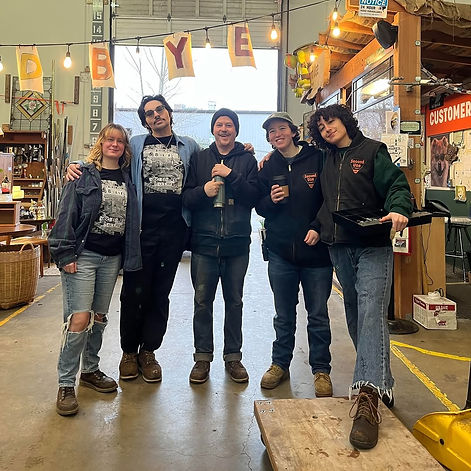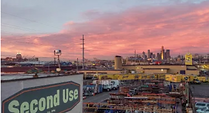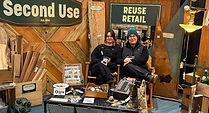
Second Use
3223 6th Ave S, Seattle, WA
2328 Fawcett Ave, Tacoma, WA
Year Started:
1994
Building Size:
80,000 sq ft
Mission Statement:
Our materials come from and are used in the local region. The company itself is locally grown. The owners are employees, and the employees together shape the future of the business.
Origins and Vision

Second Use was founded in 1994 by Roy Hunter, a contractor who had grown frustrated with the volume of reusable construction materials being discarded at the end of jobs. Driven by the belief that these materials still held value, Roy and a friend began salvaging materials on their own property and eventually transformed their idea into a business.
Startup Story
Foundation and Early Growth

Partnership with Habitat for Humanity
Operations Today

The company’s first inventory came from the demolition of a supermarket rich in salvageable lumber, giving them the momentum they needed to launch. The start of Second Use was a shoe-string operation, with initial funding from family. They rented a plot of land, set up racks covered with tarps, and ran operations out of a camper trailer. From the beginning, they structured Second Use as a for-profit business, grounded in the belief that reuse should be financially self-sustaining.
By 1997, they moved into their first formal building and began a pivotal partnership with Habitat for Humanity. This collaboration allowed them to sell donated materials and direct the proceeds to local Habitat affiliates. Since 1997, they have donated over $4 million in support, with more than 10,000 items diverted on Habitat’s behalf in the last year alone.
Today, Second Use operates two large locations in Seattle and Tacoma, Washington, with a combined footprint of 80,000 square feet. The company has grown to employ 38 staff members and is owned and managed by five board members who guide its operations as an S corporation, which means profits and losses are passed through to shareholders to report individually. Its annual revenue is approximately $5 million, and it operates on a cost-neutral basis. This means expenses are balanced by revenue, allowing the mission to remain sustainable without requiring outside subsidies.
Operations and Management
Second Use processes about 3,500 tons of salvaged building materials each year, with cabinets, doors, windows, lighting, and flooring among the most common items. The company also prides itself on accessibility and efficiency. About 65 percent of its materials are dropped off by customers at its facilities, which are designed for easy access. The rest is collected via a fleet of five trucks and a team that also performs on-site extractions. As a licensed contractor, Second Use is able to offer full-service salvage. They also provide free salvage assessments, reinforcing their commitment to reuse without financial barriers.
Technology also plays a key role. A custom-built in-house database helps manage inventory, track materials, and support consistent pricing. It is maintained by a staff member whose computer skills are a huge asset to the team. Their “materials-on-wheels” approach means that they keep their materials on platforms with wheels as much as possible, which minimizes lifting and makes it easier to manage large volumes for transportation.
While originally geared toward DIY enthusiasts, Second Use has evolved to serve contractors and professionals, a shift that supports its current strategy of exploring a “hub and spoke” model. As real estate pressures increase, especially in Seattle, the organization recognizes the need to adapt in order to sustain its impact and continue redefining what’s possible in the world of building material reuse.

Be resourceful
You don’t need a fancy facility to get going. Second Use began on a rented field with racks under tarps and a camper trailer as an office. Build your foundation, then grow as demand allows.

Design for efficiency and volume
Construction materials are large, heavy, and awkward to store. Space is critical, so plan your layout to maximize flow and access.

Invest in smart systems early
A solid inventory and pricing system can save more trouble in the long run and assist in efficient scaling.

Be a salvage service
Don’t just wait for people to drop things off. Offer pickup services and provide extraction if you have the capacity. This helps control the quality and volume of materials and makes it easier for customers to participate.
